A Guide to Shrub Cocktails
The Refreshing, Vinegar-Based Drink
In need of a quick flavor fix for that next cocktail, punch bowl, or backyard drink for the kids? Then look no further!
Shrubs are very versatile, easy-to-make, high-flavor additives that can be stored almost indefinitely.
By now you’re probably asking yourself, “Why would I add a small wooded plant to my beverage?”
We’re talking about a different type of shrub. There’s no need to take a trip to the Home Depot garden center.
What is a Shrub?
Shrubs are a type of acidulated beverage. Pretty cool $5 word, right? This just means that it is slightly acidic, but as far as your tongue is concerned, it means it’s slightly sour, tart, or tangy.
Modern shrubs use a type of vinegar to achieve this flavor. Not a fan of sour beverages?
Not to worry! Shrubs also come in sweet as well as savory varieties.
Where did Shrubs Come From?
Pirates! Yes, pirates and smugglers are responsible for this delicious beverage.
To avoid detection, they would sometimes sink their rum barrels in the ocean to avoid confiscation by privateers.
Unfortunately, this rum would be tainted with seawater and was impossible to sell.
The pirates would then add fruit to mask the salty taste and, behold, the shrub was born.
The word gets its root from the Arabic word meaning “to drink.” As an added benefit, the the salt water was acidic enough to keep the fruit in the mixture from spoiling.
This allowed pirates to take barrels on longer voyages.
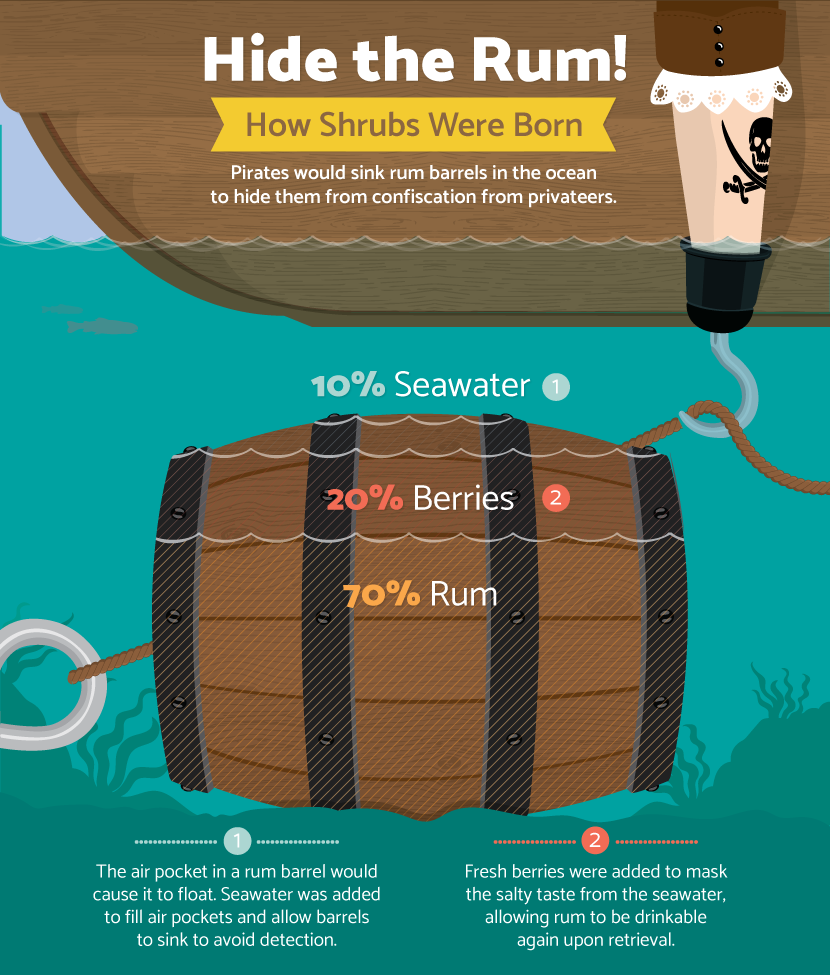
Next, enter vinegar. In 17th-century England, vinegars were used as an alternative to citrus juices in the making of preserves.
This practice was carried over to colonial America, as citrus trees weren’t widely available stateside.
Berries would be collected and bathed in vinegar for anywhere from a day up to a week.
The berries would be drained and sealed for off-season eating while the liquid was kept and referred to as drinking vinegar.
This drinking vinegar would then be added to water, soda water, or alcohol to make a tasty beverage that is tangy and surprisingly refreshing.
This practice disappeared almost entirely once refrigeration became common in households.
Juices no longer needed to be fortified in an acid to keep for long periods.
One of the most common uses of a shrub was for addition to a punch bowl.
When George and Martha Washington would entertain guests, a large punch bowl (or several!) would be placed out for guests to serve themselves.
Recipes would usually consist of a rum, whiskey, or brandy base, with a shrub added for flavor, and stretched with soda water or flat water for quantity.
Martha was well known for her punch, which was served to visiting dignitaries.
A popular recipe – extracted from a family book passed through the generations – had a base of cognac and white wine.
The white wine would spoil and turn to vinegar over three days to provide the acid content.
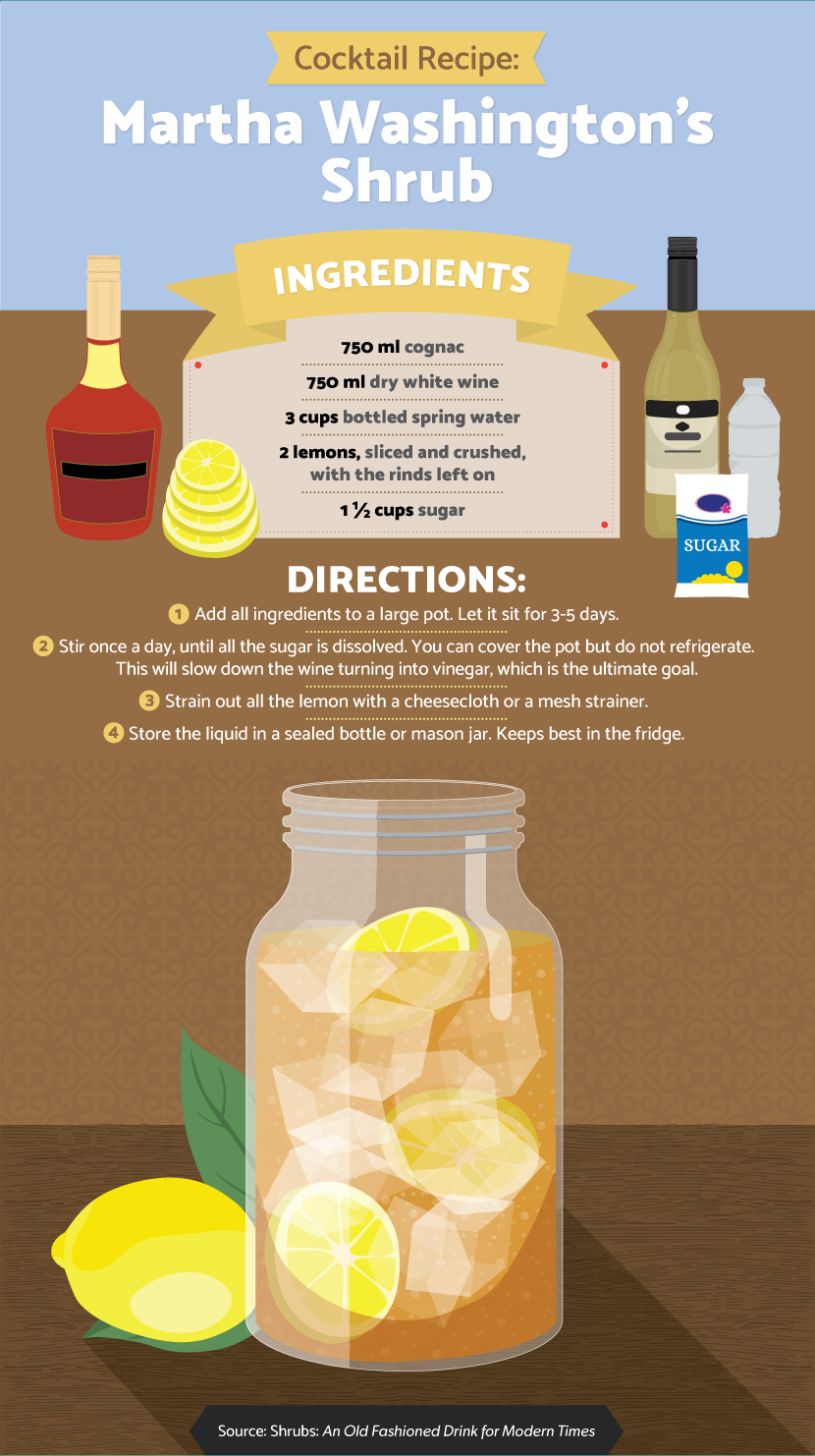
Classic Shrubs
In addition to the Washingtons’ shrub, many other colonial-era recipes can be found.
Next time you’re feeling extra patriotic on Presidents’ Day, why not host a colonial era party featuring a classic shrub or two?
Today’s Shrub
Shrubs have made a remarkable comeback since the 2000s and come in a lot of varieties, thanks to the ever-growing creativity of the bar community.
Fruits of all varieties, such as blueberries, peaches, and watermelons, are being used.
Herbs and spices such as rosemary, basil, and ginger are making appearances.
Even the acids are changing from the original salt water the pirates used, to common vinegar varieties such as balsamic, apple cider, and wine.
The following shrub recipes can be consumed on their own as a refreshing beverage, or mixed with a little club soda or seltzer to dial down the tartness.
For a more festive drink, top with cava or wine and a splash of St. Germain.
Or, mix with your favorite spirit, such as gin or vodka. The possibilities are endless with this drink!
Sour Shrubs
Shrubs most commonly come in the sour and tart varieties.
Varying degrees of sourness that can be achieved in a shrub, but don’t worry if you don’t enjoy the idea of drinking something that tastes like a sour Warhead candy.
Keep in mind that you can always water down the shrub to your liking.
This is a great recipe for the sour shrub lover.
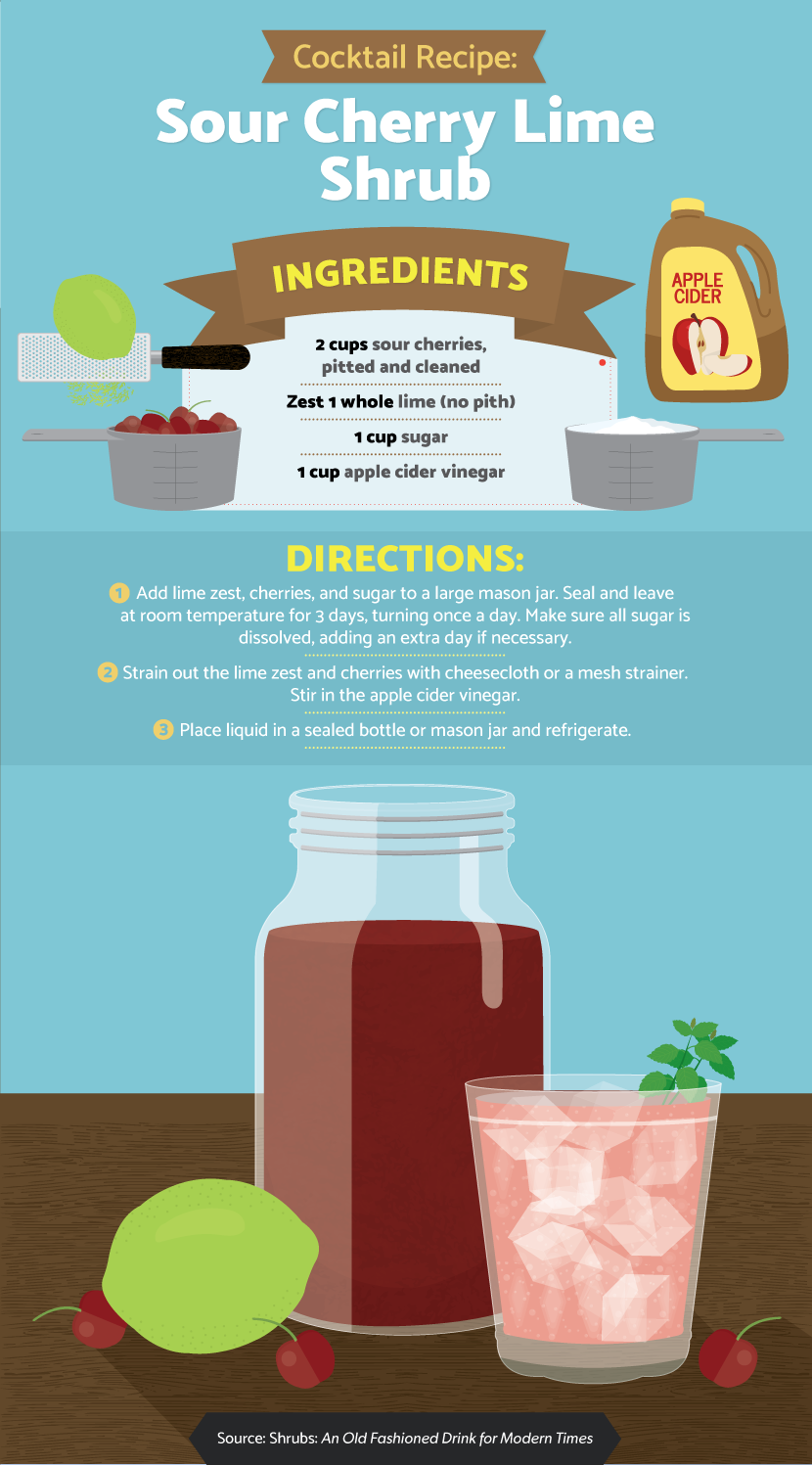
Sweet Shrubs
If sweet things are more your speed, then shrubs might not be for you.
However, there is the option of making a sweeter shrub that adds higher sugar content via fruit and more base sugars to balance out the acid.
This will create a fantastic sweet-and-sour combination that makes for some of the most interesting shrub cocktails.
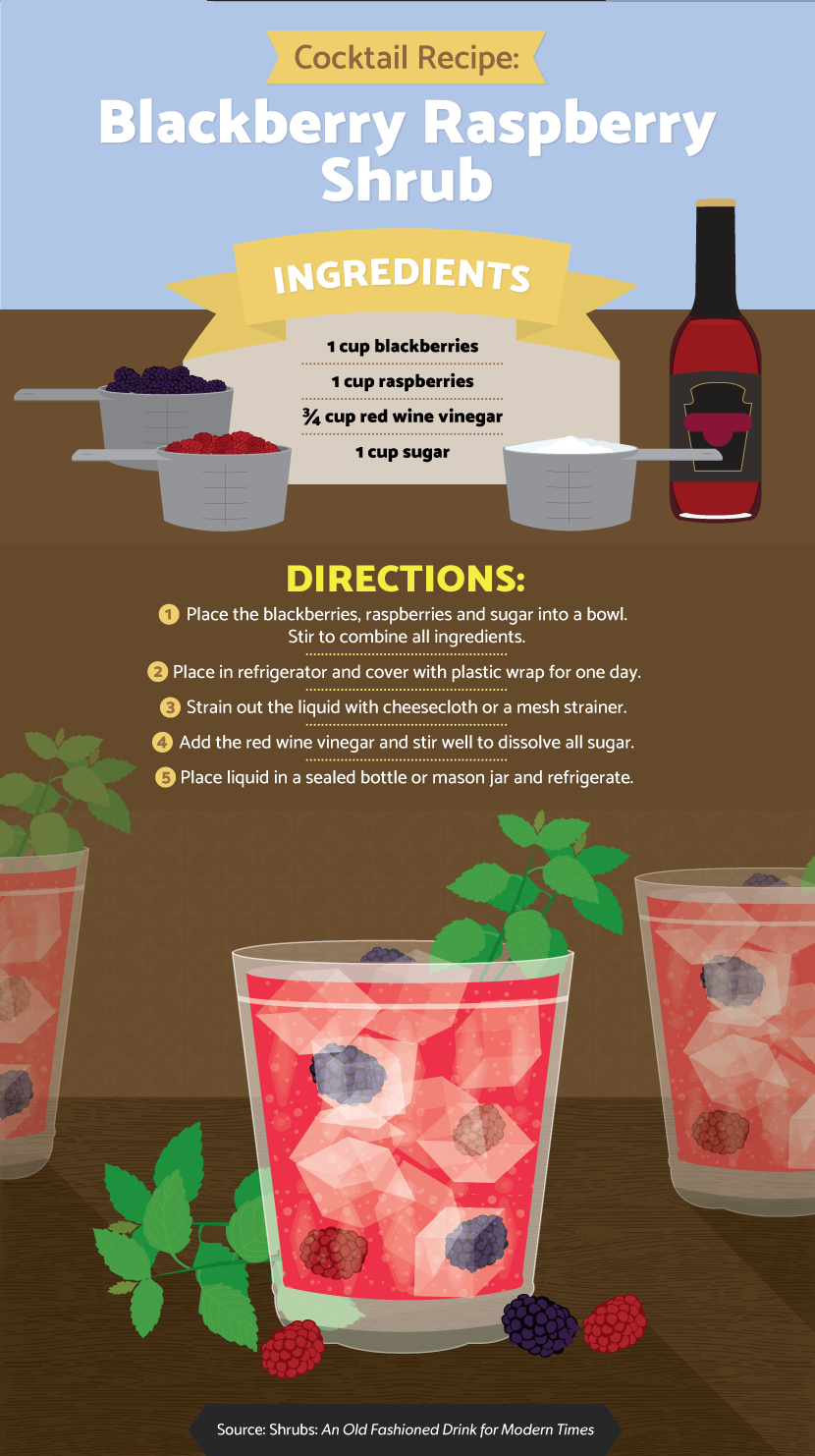
Savory Shrubs
Looking for something a little different? Why not try a savory shrub?
These are great for brunch! If you’re feeling a little adventurous, give this savory shrub a try.
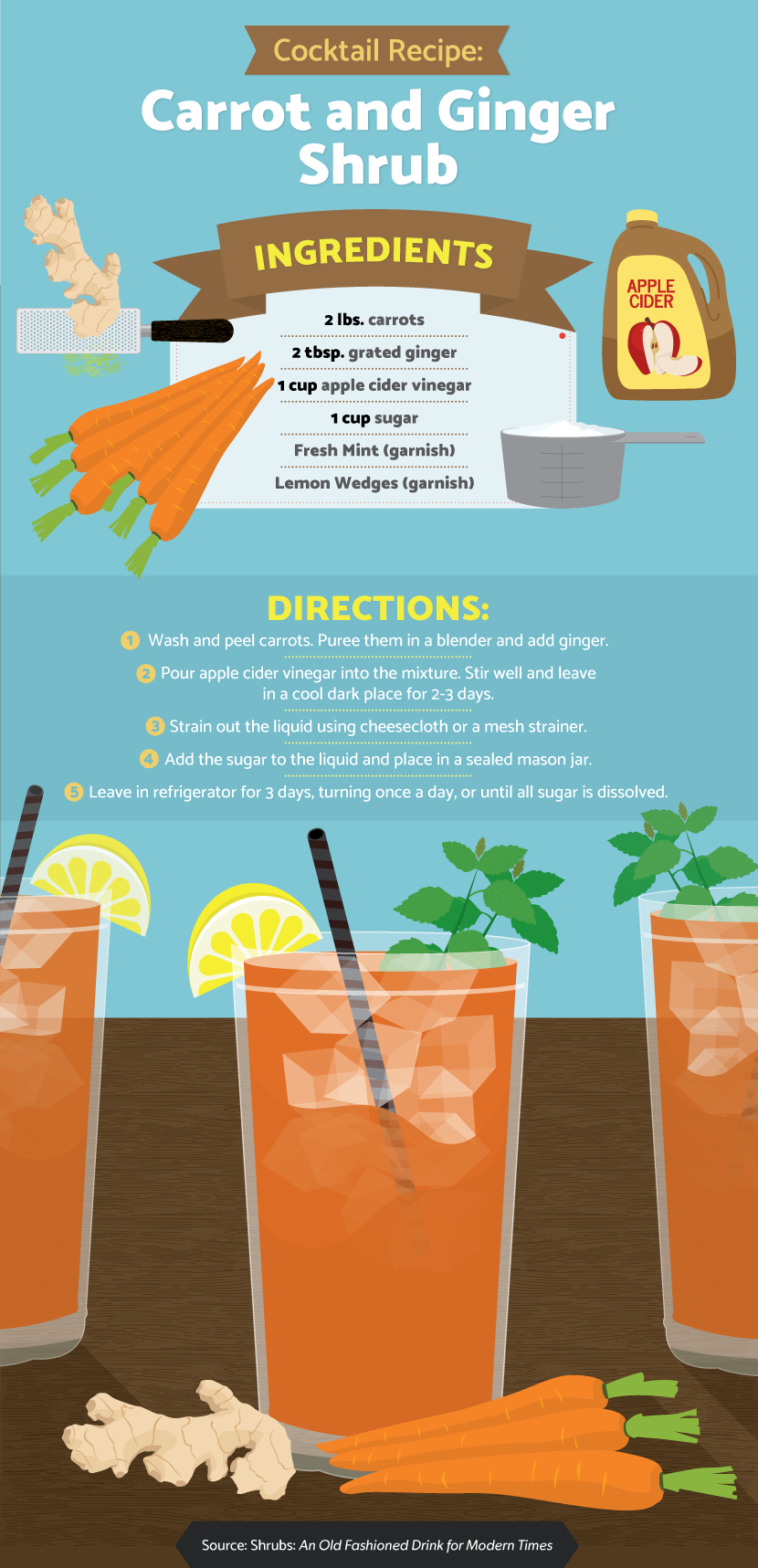
Family-Friendly Shrubs
Shrubs don’t just mean alcoholic drinks! You can very easily add any of the shrubs above to water or soda water to make a delicious, refreshing beverage for the whole family.
Shrubs can be enjoyed by people of all ages. Try making a variety that’s specifically geared for the kids.
This is a great way to get fruit into their diet while still providing a tasty beverage on a hot day.
Apple cider vinegar tends to be less harsh than traditional vinegars and is more palatable for kids.
Try swapping this into any of the above recipes. Berries like blueberries, raspberries, blackberries, and strawberries go great with the apple cider flavor.
If you really want to interest them, try throwing some sour candy into the batch to attract their little eyes.
The citric acid and sugar in the candy will be right at home in a shrub mixture.
Whether enjoyed by young or old, designated drivers or partygoers, shrubs are an incredibly versatile additive to any great beverage.
Best of all, you can make your favorite recipes in larger batches and seal them in a mason jars.
You can throw these in the cupboard or fridge, and they will keep almost indefinitely.
You now have a quick and easy way to entertain surprise guests of all kinds.
Embed the article on your site

